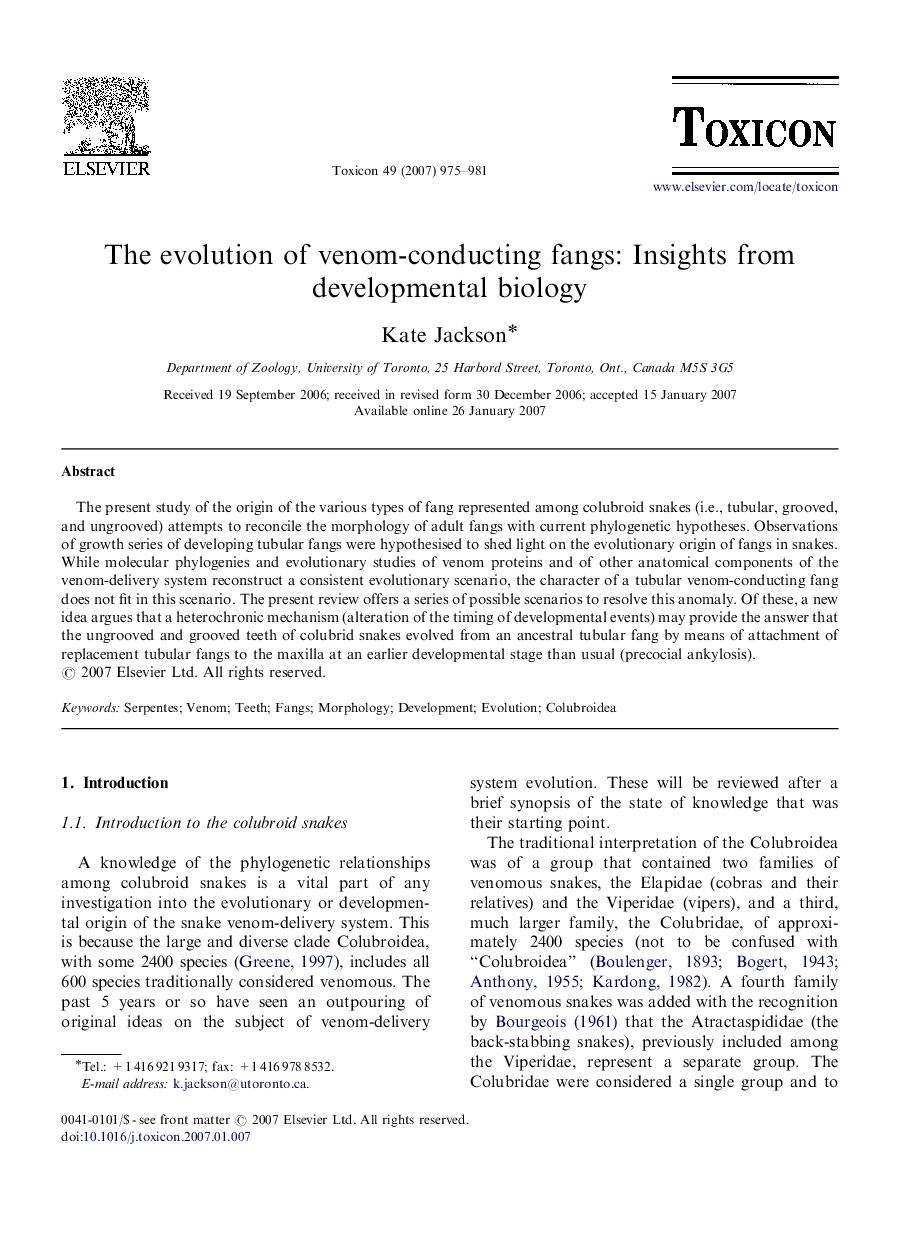| Article ID | Journal | Published Year | Pages | File Type |
|---|---|---|---|---|
| 2066839 | Toxicon | 2007 | 7 Pages |
The present study of the origin of the various types of fang represented among colubroid snakes (i.e., tubular, grooved, and ungrooved) attempts to reconcile the morphology of adult fangs with current phylogenetic hypotheses. Observations of growth series of developing tubular fangs were hypothesised to shed light on the evolutionary origin of fangs in snakes. While molecular phylogenies and evolutionary studies of venom proteins and of other anatomical components of the venom-delivery system reconstruct a consistent evolutionary scenario, the character of a tubular venom-conducting fang does not fit in this scenario. The present review offers a series of possible scenarios to resolve this anomaly. Of these, a new idea argues that a heterochronic mechanism (alteration of the timing of developmental events) may provide the answer that the ungrooved and grooved teeth of colubrid snakes evolved from an ancestral tubular fang by means of attachment of replacement tubular fangs to the maxilla at an earlier developmental stage than usual (precocial ankylosis).
